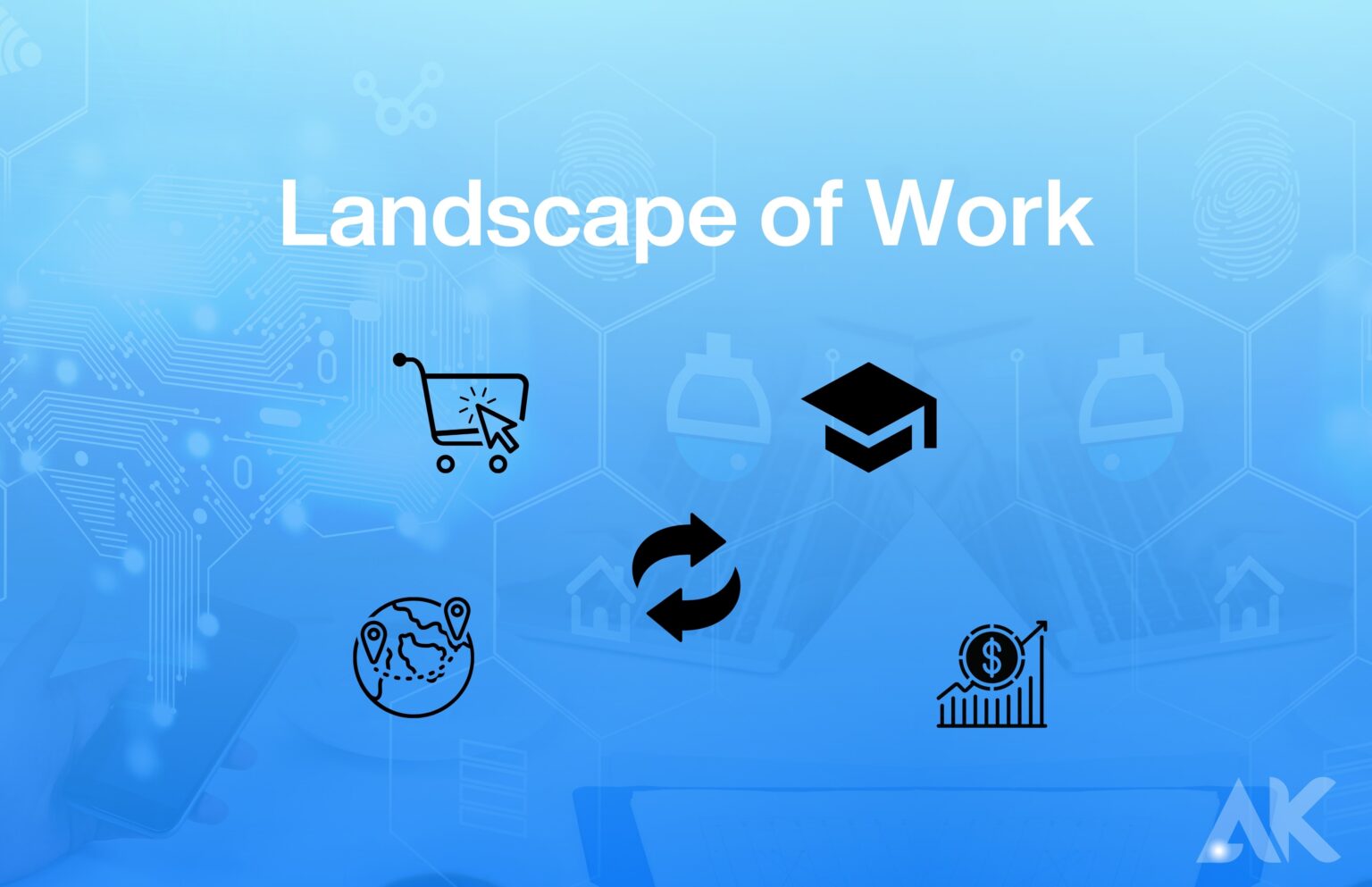In today’s rapidly evolving world, the landscape of work is undergoing significant transformations. As technology continues to advance at an unprecedented pace, it is reshaping the way we work and changing the face of the modern workforce. Traditional office spaces and 9-to-5 jobs are being replaced by flexible work arrangements, remote work options, and the rise of the gig economy.
This shift has brought about both challenges and opportunities for workers and employers alike. On one hand, the increased flexibility allows individuals to have more control over their work-life balance and opens up new avenues for employment. On the other hand, it also requires workers to adapt to new technologies, acquire new skills, and constantly stay updated in order to remain relevant in the job market. The changing landscape of work calls for innovative approaches in talent management, as organizations need to find ways to attract and retain top talent while also fostering a culture of continuous learning and growth.
Embracing Digital Transformation: How Technology is Reshaping the Way We Work
In today’s fast-paced and interconnected world, digital transformation has become a key component of modern workplaces. With the advancements in technology, businesses are continuously adapting to stay relevant and competitive. The integration of digital tools and systems has reshaped the way we work, streamlining processes and increasing efficiency. From cloud-based platforms that allow for remote collaboration to automation software that eliminates repetitive tasks, technology has revolutionized every aspect of work. As organizations embrace digital transformation, they are reaping the benefits of improved productivity, cost savings, and enhanced customer experiences. However, along with these advantages come new challenges that need to be navigated.
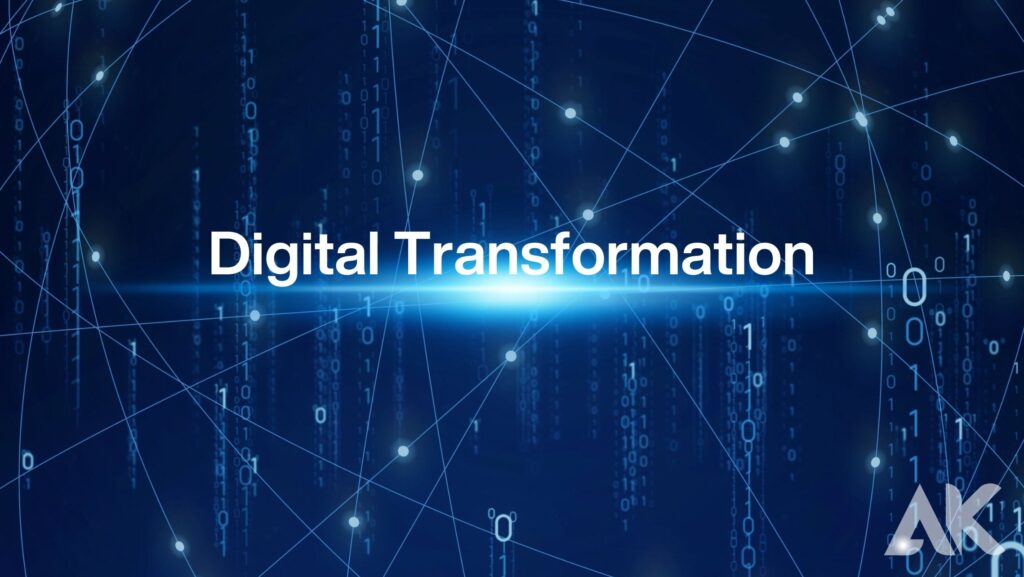
One of the major shifts brought about by digital transformation is the blurring of traditional work boundaries. With the rise of remote work, employees can now contribute to projects and collaborate with colleagues from anywhere in the world. This flexibility not only allows for a better work-life balance but also increases overall productivity. However, it also presents challenges in terms of communication and team cohesion. Companies need to invest in technology that enables seamless collaboration and ensures employees feel connected and engaged despite physical distance. Moreover, the rapid pace of technological advancements requires continuous learning and upskilling to stay relevant. In order to fully embrace digital transformation, organizations must prioritize the development of digital skills within their workforce to ensure that employees have the necessary competencies to thrive in the changing landscape of work.
Adapting to Remote Work: Navigating the Challenges and Opportunities
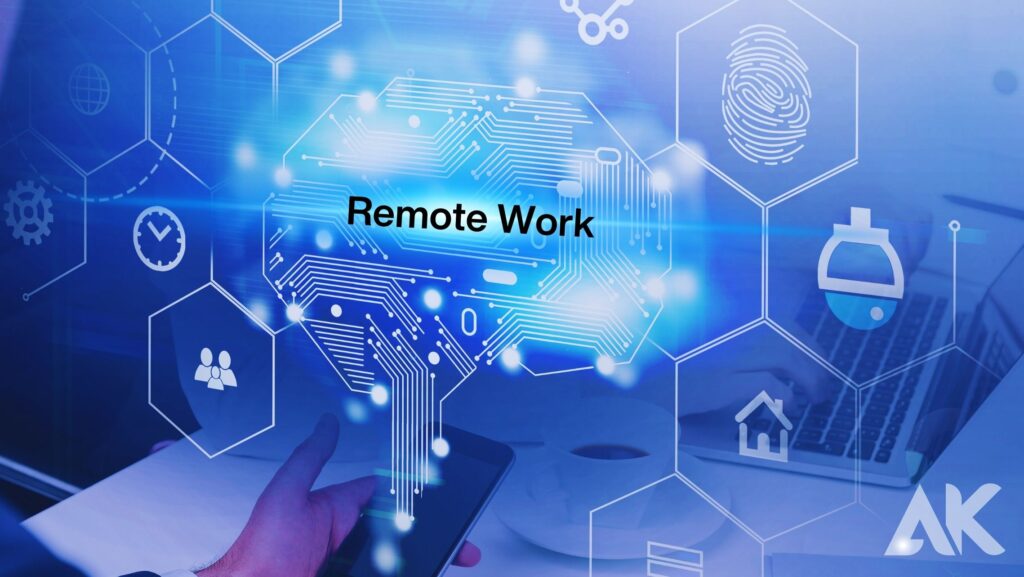
As the world becomes more interconnected and technology continues to advance, remote work has emerged as a viable option for many professionals. This shift towards remote work presents both challenges and opportunities for individuals and organizations. One of the main challenges is the need to establish effective communication and collaboration channels when team members are not physically present in the same location. Without face-to-face interactions, it can be more difficult to build relationships, share ideas, and ensure everyone is on the same page. However, remote work also brings forth an array of opportunities, such as increased flexibility and productivity. With the ability to work from anywhere, individuals have the freedom to create a work environment that suits their needs and preferences, leading to heightened job satisfaction and potentially higher performance levels. Organizations can benefit from remote work by tapping into a global talent pool, broadening their pool of candidates and potentially accessing specialized skills that may not be available locally. This can lead to a more diverse and dynamic workforce, fostering innovation and driving business growth.
The Rise of Gig Economy: Understanding the Impact on the Future Workforce
In recent years, the rise of the gig economy has been reshaping the workforce landscape, with profound implications for the future of work. As more individuals seek flexible and independent work arrangements, traditional employment models are being challenged, and the notion of a traditional career is transforming. The gig economy, characterized by short-term, project-based work engagements, has given rise to a new breed of worker – the gig worker – who thrives on autonomy and variety in their professional pursuits. This shift in employment patterns has not only impacted individuals but has also disrupted industries and businesses, necessitating a rethinking of traditional workforce management strategies.
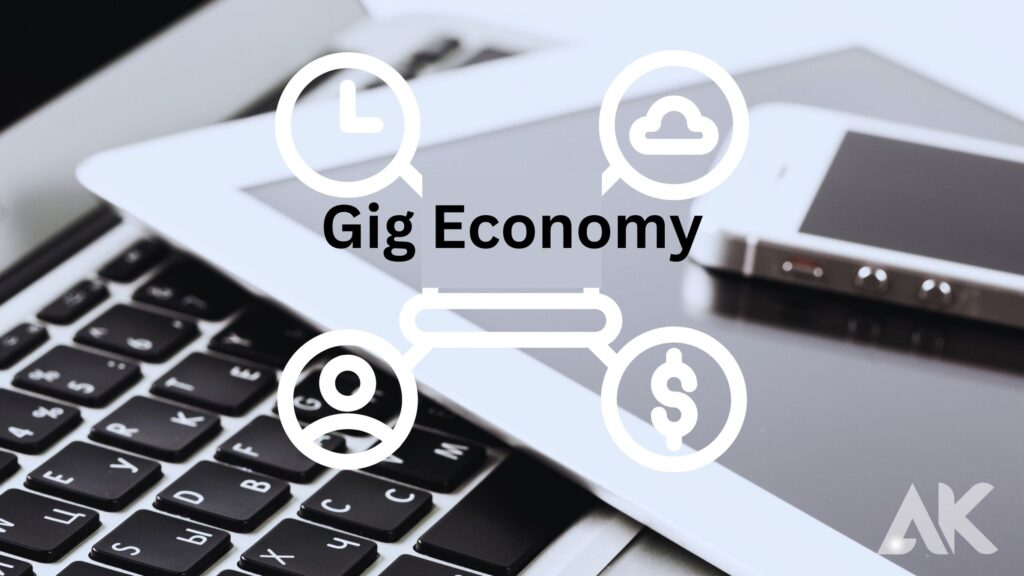
The impact of the gig economy on the future of work is multifaceted. On the one hand, it offers individuals the freedom to work on their own terms, providing a level of flexibility and control that was previously unheard of. Gig workers have the autonomy to choose the projects they want to work on and the ability to manage their own schedules. This newfound flexibility can be particularly attractive to individuals seeking a better work-life balance or those pursuing multiple interests simultaneously. Additionally, the gig economy opens up new opportunities for individuals who may have been previously excluded from traditional employment due to various constraints, such as geographical limitations or limited access to resources. The gig economy provides a level playing field where talent can be leveraged regardless of location or background.
Skills for the Future: Identifying the Key Competencies Needed in Tomorrow’s Workforce
In an ever-changing and fast-paced work environment, it is crucial for individuals to possess the key competencies needed to thrive in the future workforce. One essential skill is adaptability. With advancements in technology and the constant evolution of industries, the ability to adapt to new tools, processes, and trends will be vital. This includes being open to learning new skills, embracing change, and being comfortable with uncertainty. Adaptability allows individuals to quickly respond to shifts in the market, take on new responsibilities, and stay relevant in a rapidly changing job landscape.
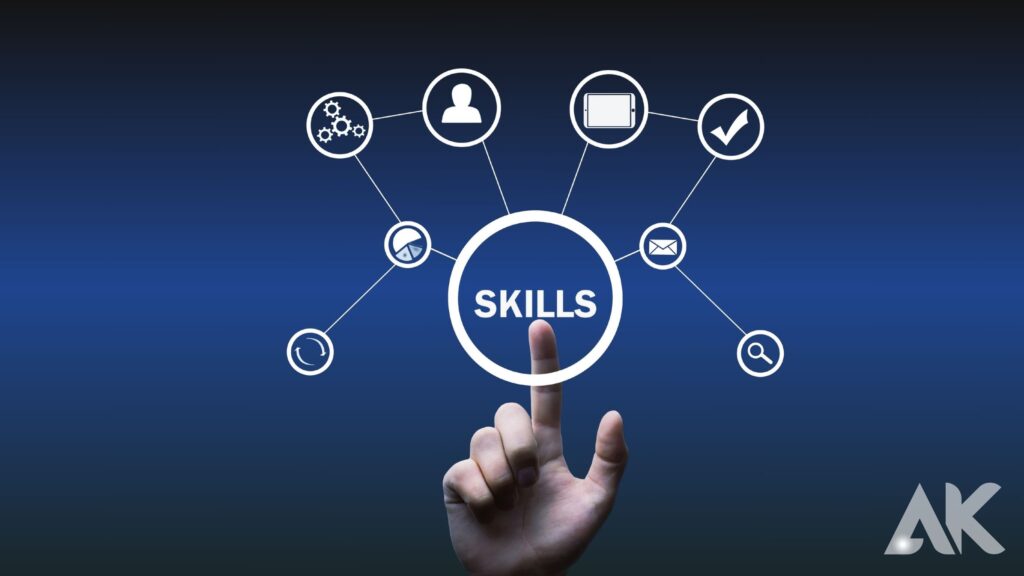
Another important competency for the future workforce is critical thinking. With the rise of automation and artificial intelligence, jobs that require rote tasks are being replaced. Therefore, individuals who can think critically, analyze information, and solve complex problems will be highly sought after. Critical thinking enables individuals to evaluate different perspectives, make informed decisions, and innovate in their roles. It involves the ability to question assumptions, think outside the box, and come up with creative solutions to challenges. As technology continues to advance, individuals who possess strong critical thinking skills will be able to navigate the complexities of the modern work environment with agility and intelligence.
Artificial Intelligence and Automation: Transforming Job Roles and Industries
As artificial intelligence (AI) and automation continue to advance, they are drastically reshaping job roles and entire industries. With the ability to process and analyze vast amounts of data in real time, AI is enabling businesses to make faster and more accurate decisions. This has resulted in the automation of repetitive and mundane tasks, freeing up time for employees to focus on more strategic and creative work. However, this transformation is not without its challenges and concerns.
One of the main concerns surrounding AI and automation is the potential job displacement. As machines become increasingly capable of performing complex tasks, certain roles may become redundant, leading to job losses in certain industries. However, it is important to note that new opportunities are also emerging as a result of AI and automation. The demand for skilled professionals who can design, implement, and manage AI systems is on the rise. Additionally, new job roles are being created that require expertise in collaborating with AI technologies. It is clear that while AI and automation may reshape job roles, they also bring with them the need for new skills and opportunities in the workforce.
The Role of Data in Workforce Management: Harnessing Insights for Effective Decision-making
In today’s rapidly evolving business landscape, the role of data in workforce management has become more crucial than ever. By harnessing valuable insights from data analysis, organizations can make more informed and effective decisions regarding their workforce. This includes everything from recruitment and talent management to performance evaluation and training.
Data-driven decision-making allows organizations to identify trends, patterns, and correlations within their workforce, enabling them to anticipate future needs and proactively address potential challenges. By closely analyzing employee data, such as performance metrics, attendance records, and feedback, companies can gain a deeper understanding of their workforce’s strengths, weaknesses, and overall engagement levels. This knowledge empowers managers to make strategic decisions that optimize productivity, improve employee satisfaction, and ultimately drive business success.
Building a Flexible Workforce: Strategies for Embracing Agility and Resilience
The modern business landscape is constantly evolving, and organizations must adapt to stay ahead. One key aspect of this adaptation is building a flexible workforce that can embrace agility and resilience. A flexible workforce is one that can quickly respond to changes, whether it be market shifts, technological advancements, or unexpected disruptions. This requires an organization to have a proactive approach to workforce management and a commitment to nurturing a culture that values flexibility and adaptability.
One strategy for building a flexible workforce is investing in employee training and development. By providing opportunities for continuous learning and upskilling, organizations can empower their employees to acquire new skills and knowledge that are relevant to the changing demands of the business environment. This not only enhances individual capabilities but also fosters a sense of motivation and engagement among employees. Additionally, cross-training employees and encouraging multi-functional roles can further enhance flexibility within the workforce. This allows employees to seamlessly transition between different tasks or departments, ensuring that the organization can quickly adapt to changing needs.
Enhancing Employee Well-being in the Digital Age: Prioritizing Mental Health and Work-Life Balance
In today’s digital age, prioritizing mental health and work-life balance has become more crucial than ever. With the constant connectivity that technology brings, employees are often expected to be available around the clock, blurring the boundaries between work and personal life. This can lead to increased stress, burnout, and overall lower well-being. Employers must recognize the importance of creating a work environment that supports employee mental health and encourages a healthy work-life balance.
One way to prioritize mental health is by promoting open dialogue and destigmatizing discussions around mental well-being. Employees should feel comfortable seeking support or sharing their struggles without fear of judgment or negative consequences. Encouraging regular check-ins with employees, offering mental health resources, and providing training on stress management and self-care are important steps in fostering a supportive and healthy work culture. Additionally, implementing flexible work arrangements and setting clear boundaries around workload and expectations can help employees maintain a balance between their professional and personal lives. By prioritizing mental health and work-life balance, employers can create a more engaged, productive, and fulfilled workforce.
Collaboration and Connectivity: Unlocking the Potential of Virtual Teams in the Future of Work
As technology continues to advance, virtual teams have become increasingly prevalent in today’s workforce. Collaborating with colleagues from different locations and time zones has never been easier, thanks to the connectivity provided by digital tools and platforms. This shift towards virtual teams has unlocked a new level of potential in the future of work, allowing organizations to tap into a global talent pool and foster diverse perspectives.
One of the key advantages of virtual teams is the ability to bring together individuals with diverse skill sets and backgrounds. By leveraging the power of collaboration and connectivity, organizations can create teams that are not bound by geographical limitations, enabling them to access the best talent regardless of their physical location. This not only enhances problem-solving and creativity within the team but also contributes to the overall growth and innovation of the organization. Additionally, virtual teams can promote a sense of inclusivity and diversity, as employees from different cultures and backgrounds come together to work towards a common goal.
FAQ
What is the changing landscape of work?
The changing landscape of work refers to the shifts and transformations occurring in the modern workforce, such as the rise of remote work, gig economy, and digital transformation.
How is technology reshaping the way we work?
Technology is reshaping the way we work by enabling remote work, increasing connectivity and collaboration through virtual teams, and automating tasks through artificial intelligence and automation.
What are the challenges and opportunities of remote work?
Remote work presents challenges such as maintaining communication and collaboration, managing work-life balance, and ensuring productivity. However, it also offers opportunities for flexibility, cost savings, and access to a wider talent pool.
What is the gig economy and how does it impact the future workforce?
The gig economy refers to a labor market characterized by short-term contracts and freelance work. It impacts the future workforce by providing opportunities for flexible work arrangements, but also raises concerns about job security and benefits.

